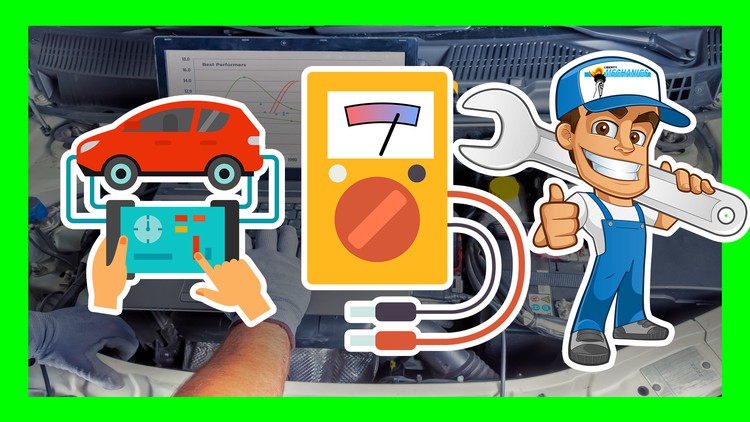Automotive Electrician and Mechanic Training | AEMT+ | 2022
In cars and other vehicles, there are people who know how to work with electrical systems. They are called “automotive electricians,” or AEMT+.
What you’ll learn
Automotive Electrician and Mechanic Training | AEMT+ | 2022
- The basics of electricity.
- Altering the Current (AC).
- Direct Current is what you get (DC).
- The basics of the car ECU.
- Auto Computer Diagnostics.
- In Chip Tuning, you can change the chip.
Checking the electrical systems of your car
Requirements
-
There are no rules to follow.
Description
Cars use electricity. In the past, electrical systems were mostly on their own. If, for example, the ignition system was only in charge of giving the spark plugs the voltage they needed to fire. Vacuum and mechanical advance systems were used to control the timing of the ignition. Today, there are very few electrical systems that are still completely separate from the rest of the world. Today, most manufacturers use computers to connect their electrical systems together. This means that information from one system can be used by another one.
This could mean that a bad part could cause a lot of different symptoms. The wipers can work with the vehicle’s speed sensor to make the wipers move with the speed of the car. People who have antilock brakes might get information from the speed sensor. You can then pass this information on to the transmission control module. The instrument cluster can then get speedometer information from the car. If the speed sensor on the car doesn’t work, this could cause antilock brakes to work and a warning light to come on in the dash. But it could also cause the speedometer to not work, the transmission to not shift, and the wipers to not work properly.
The computer is an electronic device that can store and process data, and it can also run other devices. It used to be common for people to think of basic things like the direction lights and the rear window defogger as the most important parts of a car. But now they are computer-controlled. A computer looks at the physical conditions that show information (data).
The four main functions of the computer can be broken down into four parts:
1. Input.
2. Processing.
3. Storage.
4. Output.
Networks that connect cars and trucks Most car manufacturers now use a system of communication called multiplexing (MUX) to let control modules talk to each other. This allows them to share information. Multiplexing allows you to use a single circuit to send and share data between different control modules in your car. When you wire something together with a MUX system, there are bus data links that connect each module. All the modules on the bus can send and receive digital codes over the links. Any of the modules can get the signal from a sensor. Accessory systems are electronic.
Automotive Electrician and Mechanic Training | AEMT+ | 2022
This allows for better monitoring of the systems to make sure they are working properly and to find out if there is a problem. The electronic cruise control systems work. Cruise control is a system that lets the car keep going at a certain speed even when the driver takes their foot off the gas pedal. Most cruise control systems are made up of electrical and mechanical parts. Seats that make you think of the past.
You can set up different positions for your seats with the memory feature, and then just push one button to get them back to where you left them. The memory seat feature is an extra feature that comes with the basic power seat. An easy exit feature may be an extra feature of the memory seat that makes it easier to get in and out of the car by moving the seat all the way back and down. Some systems also move the steering wheel up and all the way to the top. Sunroofs are made of electricity. Some car companies have added electronic control to their electric sunroofs. These systems have a control module that has a pair of relay circuits and a timer built-in.
Who this course is for:
- Beginning auto electricians










